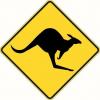With grinder at last installed on stand, cambered the O1 blade for my LV 5 1/4w. Grinding went well I think. Got the 8Ē radius I wanted. But Iím struggling with sharpening. In my LN jig I could get the middle but. In the corners, no matter how much pressure I applied, I count get on the stone. Tried freehand but with neuropathy Iím not the greatest to feel bevels. Edge just is t getting sharp.
Suggestions?
FWIW using king 1k & 6k water stones




 Reply With Quote
Reply With Quote






